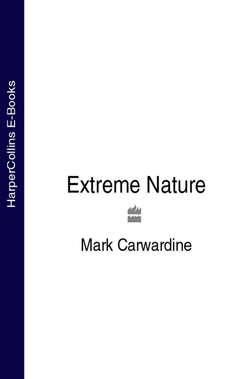Читать книгу Extreme Nature - Mark Carwardine - Страница 12
Most gruesome partnership
Оглавление| NAME | luminescent bacteria Photorhabdus luminescens meets nematode Heterorhabditis bacteriophora |
| LOCATION | inside a caterpillar or maggot |
| ABILITY | combining forces to eat larvae alive |
© Randy Gaugler
This is a slow and horrible way to die. A worm-like creature, a nematode, goes on the hunt by squirming through the soil in search of an unsuspecting insect grub, or larva. It’s not particularly fussy and likes anything from a weevil to a fly maggot, but it may take months to find a suitable victim. When it does, it penetrates the cuticle of the larva, either through an opening such as a breathing pore or by hacking a hole with its special ‘tooth’. Once inside, it sets free more than a hundred bacteria from inside its gut, which start producing deadly toxins, digestive enzymes and antibiotics.
The bacteria are luminescent, and as they multiply, the grub takes on a deathly glow. The nematode then starts feeding on the bacteria and the remains of the grub corpse, which is kept free from other competing microorganisms by the antibiotics. Finally, it changes into a hermaphrodite female, laying eggs in the cadaver that hatch into both male and female nematodes.
Yet more of her eggs develop inside her, and when they hatch, the juvenile nematodes eat their mother. They then mate and produce their own eggs. It’s at this point, two weeks later, that the grub finally breaks up and thousands of young nematodes (each carrying the bacteria in their guts) exit into the soil. The bacteria and the nematode can’t exist without each other – a gruesome partnership but one that humans have joined, helping the little nematodes spread by deliberately releasing them to hunt down garden pests.
